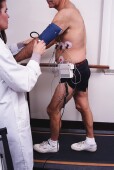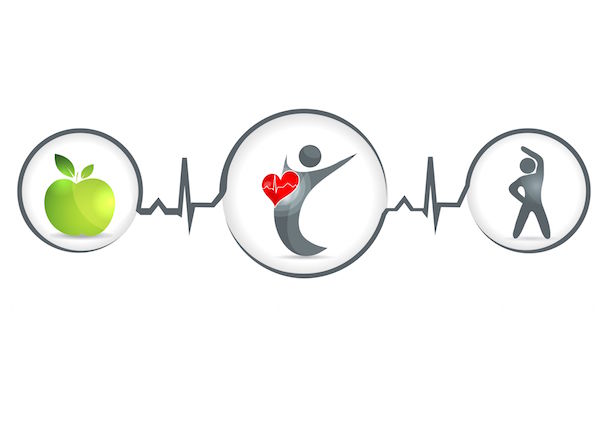
MONDAY, May 16 (HealthDay News) — Patients who undergo angioplasty to unblock a clogged artery have better odds of survival if they participate in a cardiac rehabilitation program afterwards, researchers report.
The findings, published May 16 in Circulation, are significant given the fact that more than 600,000 angioplasties are performed in the United States each year, according to the American Heart Association (AHA).
In the 14-year analysis, researchers examined the outcomes for nearly 2,400 patients who underwent percutaneous coronary interventions (PCI), commonly known as angioplasties. The study found that 44 percent of the patients had participated in at least one session of a cardiac rehabilitation program, which typically includes patient education, customized exercise programs, nutrition counseling, assistance in quitting smoking, weight control therapy and medical evaluations to track patient progress.
Overall, researchers discovered a 46 percent relative reduction in death from all causes in patients who participated in a rehab program following an angioplasty.
“Our findings show that patients who participate in cardiac rehabilitation following [angioplasty] have better long-term survival, about 50 percent better than those who don’t participate in cardiac rehabilitation,” study author Dr. Randal Thomas, director of the Mayo Clinic’s Cardiovascular Health Clinic, said in an AHA news release.
The results took behavioral issues, such as smoking, into account, as well as any medical conditions that might affect life expectancy, including heart failure, kidney disease or diabetes. The researchers also noted a difference in death rates as early as one year after surgery. Improved outcomes were identified across the board, regardless of age or gender.
AHA spokeswoman Dr. Suzanne Steinbaum noted that “cardiac rehabilitation in the past had shown to reduce mortality after a heart attack by 20 to 30 percent,” but post-angioplasty rehab programs weren’t covered by Medicare until 2006.
“Cardiac rehabilitation provides physiological and psychological benefits of exercise, improves adherence to preventive therapies and manages the cardiovascular risk factors,” said Steinbaum, director of women and heart disease at Lenox Hill Hospital in New York City. “In the United States, [the] participation rate is only 25 percent, but clearly as a preventive measure for mortality from heart disease, cardiac rehabilitation as a treatment plan after stent or angioplasty is critical.”
The study authors stressed that angioplasty is an important treatment, but not a cure for heart disease. “Cardiac rehabilitation programs are effective at improving recovery, quality of life and long-term survival because they help deliver the lifestyle and medication therapies that have been shown to slow or even reverse the process of heart disease,” said Thomas.
More information
The U.S. National Heart, Lung, and Blood Institute provides detailed information on coronary angioplasty.

